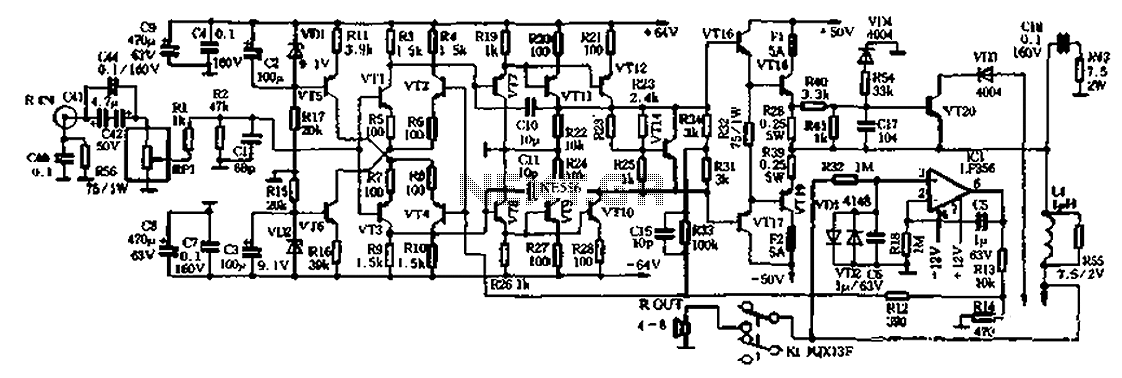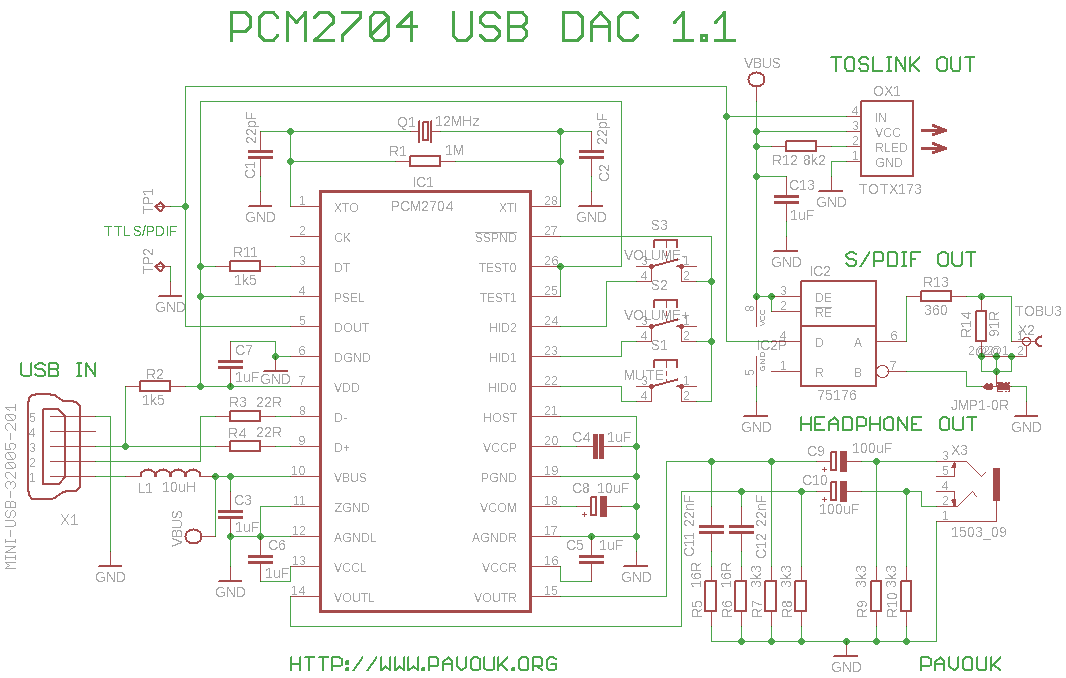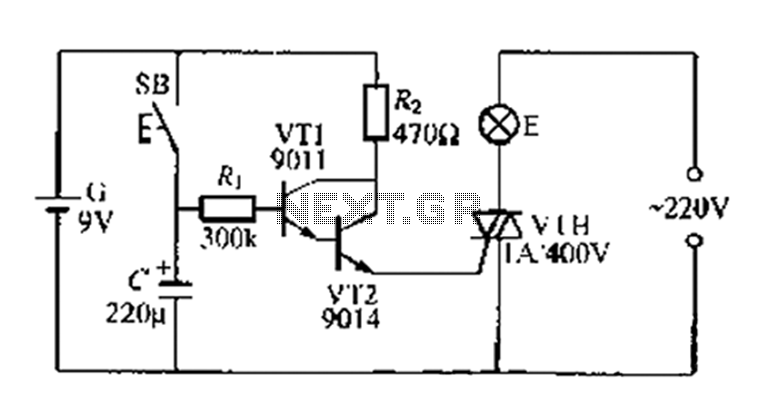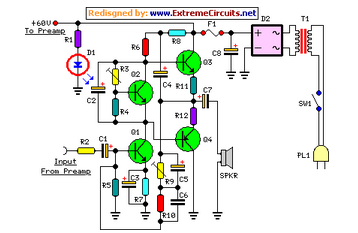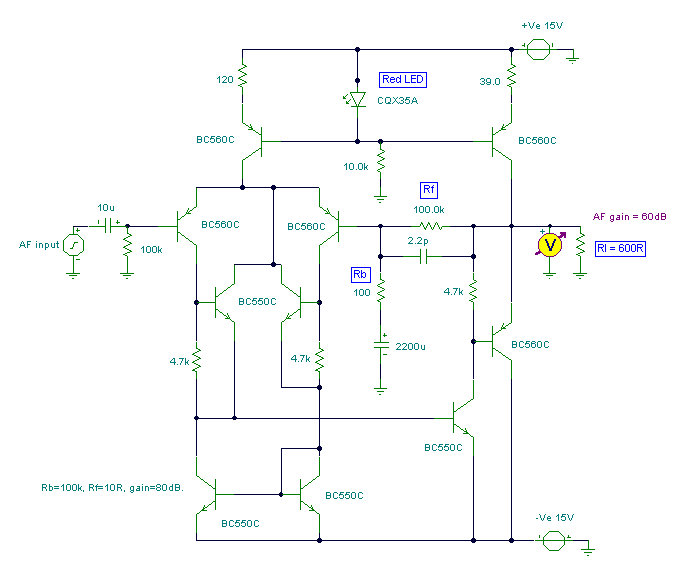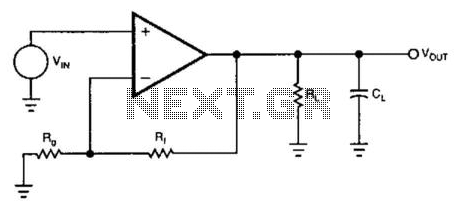
BC547 Transistor For Output Relay Delay Audio Amplifier
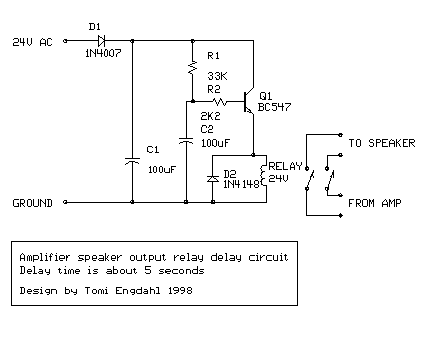
The following circuit illustrates a BC547 transistor used in an output relay delay audio amplifier circuit diagram. Features include the immediate disconnection of the speaker when the...
The BC547 transistor is a widely utilized NPN bipolar junction transistor, often employed in amplifier and switching applications. In the context of the output relay delay audio amplifier circuit, the BC547 serves as a crucial component for controlling the relay that connects or disconnects the speaker from the audio output.
The circuit typically includes an audio input stage where the audio signal is amplified to a suitable level. The amplified signal is then fed to the base of the BC547 transistor through a resistor, which limits the base current and ensures proper operation of the transistor. When the audio signal reaches a certain threshold, the transistor turns on, allowing current to flow from the collector to the emitter. This action energizes the relay coil, closing the relay contacts and connecting the speaker to the amplifier output.
An important feature of this circuit is the delay mechanism implemented to prevent sudden disconnection of the speaker. This is achieved by incorporating additional components such as capacitors and resistors, which create a time constant that controls how quickly the relay operates. When the audio signal is removed, the capacitor discharges slowly, keeping the relay activated for a brief period before it opens, thus disconnecting the speaker gradually rather than abruptly.
The circuit may also include protection diodes across the relay coil to prevent back EMF from damaging the transistor when the relay is de-energized. This arrangement ensures the longevity and reliability of the circuit, making it suitable for audio applications where speaker protection is critical.
Overall, the BC547 transistor-based output relay delay audio amplifier circuit is designed to provide controlled speaker connection and disconnection, enhancing the audio experience while safeguarding the components involved.The following circuit shows about BC547 Transistor For Output Relay Delay Audio Amplifier Circuit Diagram. Features: disconnects the speaker immdiatly when the .. 🔗 External reference
The BC547 transistor is a widely utilized NPN bipolar junction transistor, often employed in amplifier and switching applications. In the context of the output relay delay audio amplifier circuit, the BC547 serves as a crucial component for controlling the relay that connects or disconnects the speaker from the audio output.
The circuit typically includes an audio input stage where the audio signal is amplified to a suitable level. The amplified signal is then fed to the base of the BC547 transistor through a resistor, which limits the base current and ensures proper operation of the transistor. When the audio signal reaches a certain threshold, the transistor turns on, allowing current to flow from the collector to the emitter. This action energizes the relay coil, closing the relay contacts and connecting the speaker to the amplifier output.
An important feature of this circuit is the delay mechanism implemented to prevent sudden disconnection of the speaker. This is achieved by incorporating additional components such as capacitors and resistors, which create a time constant that controls how quickly the relay operates. When the audio signal is removed, the capacitor discharges slowly, keeping the relay activated for a brief period before it opens, thus disconnecting the speaker gradually rather than abruptly.
The circuit may also include protection diodes across the relay coil to prevent back EMF from damaging the transistor when the relay is de-energized. This arrangement ensures the longevity and reliability of the circuit, making it suitable for audio applications where speaker protection is critical.
Overall, the BC547 transistor-based output relay delay audio amplifier circuit is designed to provide controlled speaker connection and disconnection, enhancing the audio experience while safeguarding the components involved.The following circuit shows about BC547 Transistor For Output Relay Delay Audio Amplifier Circuit Diagram. Features: disconnects the speaker immdiatly when the .. 🔗 External reference
Warning: include(partials/cookie-banner.php): Failed to open stream: Permission denied in /var/www/html/nextgr/view-circuit.php on line 713
Warning: include(): Failed opening 'partials/cookie-banner.php' for inclusion (include_path='.:/usr/share/php') in /var/www/html/nextgr/view-circuit.php on line 713
